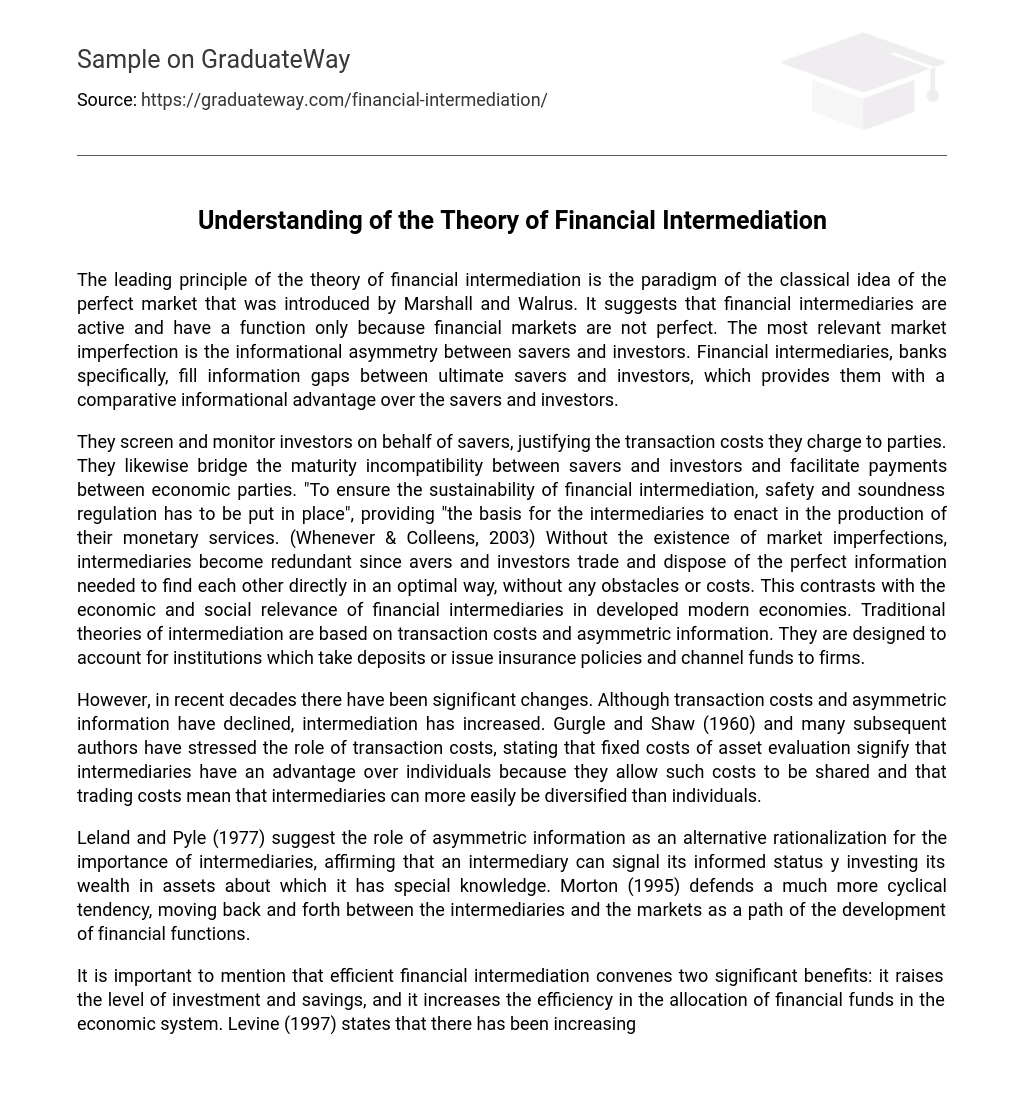The leading principle of the theory of financial intermediation is the paradigm of the classical idea of the perfect market that was introduced by Marshall and Walrus. It suggests that financial intermediaries are active and have a function only because financial markets are not perfect. The most relevant market imperfection is the informational asymmetry between savers and investors. Financial intermediaries, banks specifically, fill information gaps between ultimate savers and investors, which provides them with a comparative informational advantage over the savers and investors.
They screen and monitor investors on behalf of savers, justifying the transaction costs they charge to parties. They likewise bridge the maturity incompatibility between savers and investors and facilitate payments between economic parties. “To ensure the sustainability of financial intermediation, safety and soundness regulation has to be put in place”, providing “the basis for the intermediaries to enact in the production of their monetary services. (Whenever & Colleens, 2003) Without the existence of market imperfections, intermediaries become redundant since avers and investors trade and dispose of the perfect information needed to find each other directly in an optimal way, without any obstacles or costs. This contrasts with the economic and social relevance of financial intermediaries in developed modern economies. Traditional theories of intermediation are based on transaction costs and asymmetric information. They are designed to account for institutions which take deposits or issue insurance policies and channel funds to firms.
However, in recent decades there have been significant changes. Although transaction costs and asymmetric information have declined, intermediation has increased. Gurgle and Shaw (1960) and many subsequent authors have stressed the role of transaction costs, stating that fixed costs of asset evaluation signify that intermediaries have an advantage over individuals because they allow such costs to be shared and that trading costs mean that intermediaries can more easily be diversified than individuals.
Leland and Pyle (1977) suggest the role of asymmetric information as an alternative rationalization for the importance of intermediaries, affirming that an intermediary can signal its informed status y investing its wealth in assets about which it has special knowledge. Morton (1995) defends a much more cyclical tendency, moving back and forth between the intermediaries and the markets as a path of the development of financial functions.
It is important to mention that efficient financial intermediation convenes two significant benefits: it raises the level of investment and savings, and it increases the efficiency in the allocation of financial funds in the economic system. Levine (1997) states that there has been increasing recognition for the positive impact of uncial intermediation on the economy, proposing that “the efficient allocation of capital within an economy fosters economic growth by acting on the saving rate, on the fraction of saving channeled to investment or on the social marginal productivity of investment. Over the years many traditional financial markets have expanded and new markets have come into existence. Transaction costs have tumbled and information has become cheaper and more accessible. However, these changes have not coincided with a decrease in intermediation. In fact, the reverse has occurred. Intermediaries have grown in importance in traditional markets and represent a large majority of the trading in new markets.
Standard theories of intermediation based on transaction costs and asymmetric information are problematic to reconcile with the changes that have taken place. Participation costs are crucial to understanding the current activities of intermediaries and in particular their focus on risk management.





